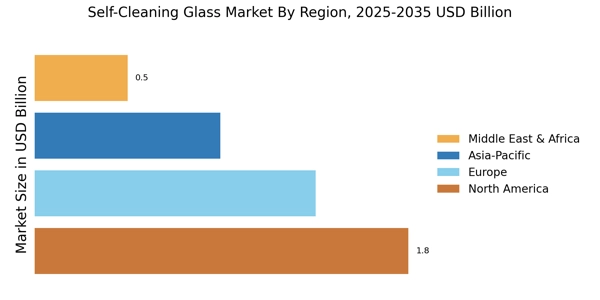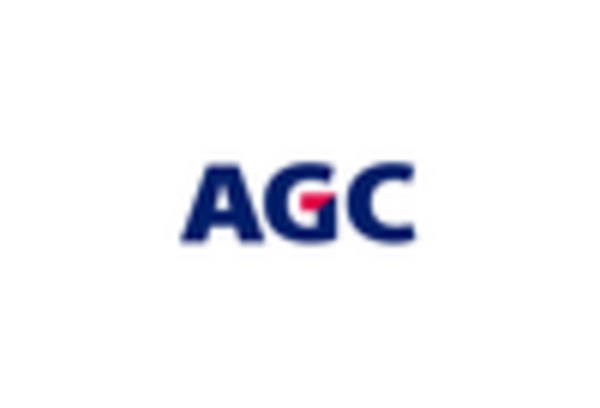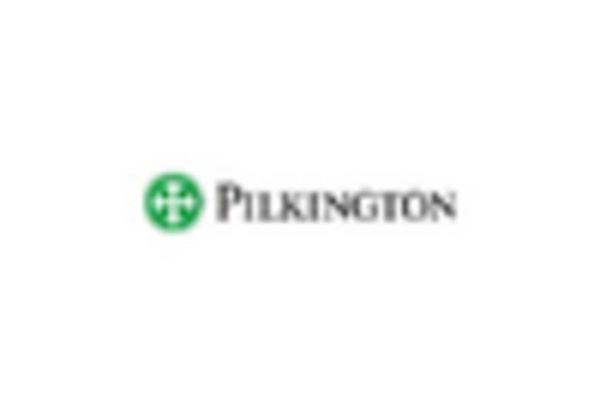Increased Urbanization
Urbanization is a significant driver for the Self-Cleaning Glass Market. As populations migrate towards urban centers, the demand for modern, aesthetically pleasing buildings rises. Self-cleaning glass offers a practical solution for urban environments, where pollution and dirt accumulation can be problematic. The convenience of reduced maintenance appeals to property developers and owners, making self-cleaning glass an attractive option. With urban areas projected to house over 68% of the world's population by 2050, the market for self-cleaning glass is poised for substantial growth as urban planners and architects incorporate this technology into new developments.
Health and Hygiene Awareness
The Self-Cleaning Glass Market is benefiting from heightened awareness regarding health and hygiene. In an era where cleanliness is paramount, self-cleaning glass provides a solution that minimizes the accumulation of dirt and contaminants. This is particularly relevant in healthcare facilities, schools, and public buildings, where maintaining a clean environment is crucial. The self-cleaning properties of this glass can potentially reduce the spread of germs and bacteria, making it a preferred choice for architects and builders focused on health-conscious designs. As the emphasis on hygiene continues to grow, the demand for self-cleaning glass is likely to increase.
Rising Demand for Energy Efficiency
The Self-Cleaning Glass Market is experiencing a notable increase in demand for energy-efficient building materials. As energy costs continue to rise, consumers and businesses alike are seeking solutions that reduce energy consumption. Self-cleaning glass, with its ability to minimize the need for cleaning agents and reduce maintenance costs, aligns well with this trend. According to recent data, buildings equipped with self-cleaning glass can achieve up to 30% energy savings compared to traditional glass. This growing awareness of energy efficiency is likely to drive the adoption of self-cleaning glass in both residential and commercial sectors.
Government Regulations and Incentives
Government regulations aimed at promoting sustainable building practices are influencing the Self-Cleaning Glass Market. Many regions are implementing stricter building codes that encourage the use of environmentally friendly materials. Self-cleaning glass, which often incorporates eco-friendly technologies, aligns with these regulations. Additionally, various governments are offering incentives for the adoption of energy-efficient building materials, further propelling the market. As these regulations become more prevalent, the self-cleaning glass market is expected to expand, driven by both compliance and the desire for sustainable construction practices.
Technological Innovations in Coatings
Technological advancements in coatings are a key driver for the Self-Cleaning Glass Market. Innovations in nanotechnology and hydrophilic coatings have enhanced the performance of self-cleaning glass, making it more effective in repelling dirt and grime. These advancements not only improve the functionality of self-cleaning glass but also expand its applications across various sectors, including automotive and architecture. As manufacturers continue to invest in research and development, the market is likely to see a surge in new products that meet the evolving needs of consumers, thereby fostering growth in the self-cleaning glass sector.


















Leave a Comment